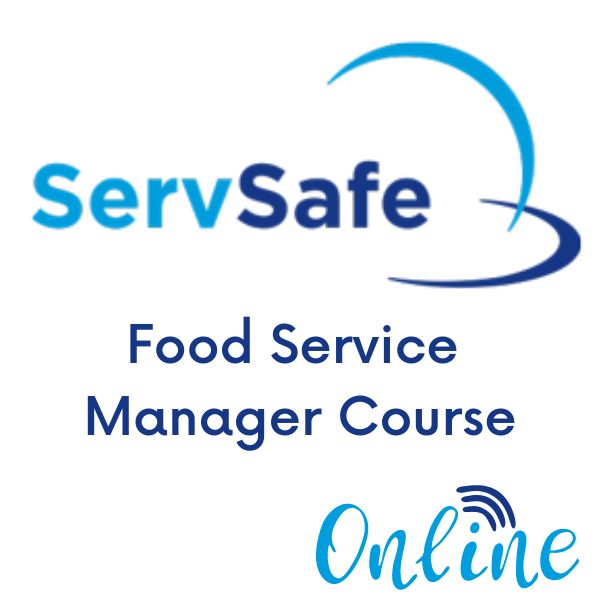The Ultimate Guide to Becoming a Certified ServSafe Food Handler in Your State
Rapid and Efficient Food Trainers Educating for Qualification
In the food solution market, the relevance of quick and effective food handlers training for qualification can not be overstated. Sufficient training makes certain that workers are educated regarding crucial food security methods, eventually safeguarding public health and enhancing functional effectiveness.
Importance of Food Safety Training
Although food security training may feel like a basic demand for food handlers, its value can not be overstated. The food market is naturally susceptible to a variety of wellness threats, including foodborne ailments that can develop from inappropriate handling, storage space, and preparation practices. Reliable training equips food handlers with the understanding necessary to mitigate these risks, therefore ensuring the safety and security and high quality of the food being offered.
In addition, food security training fosters a society of accountability and diligence amongst team. They are extra likely to stick to procedures and report potential threats when employees comprehend the essential function they play in maintaining hygiene criteria. This positive technique not just secures consumers however likewise enhances the credibility of the establishment.
Thus, investing in extensive food safety training is not merely a lawful procedure yet a critical decision that safeguards public wellness and maintains business feasibility. Eventually, the importance of food security training extends past private duty; it is a fundamental element that supports the stability of the entire food supply chain.
Secret Parts of Training Programs

First of all, the training material need to cover important subjects such as cross-contamination, correct food storage, temperature level control, and personal hygiene methods (servsafe). This makes sure that food handlers are fluent in the essential principles of food safety and security
Secondly, the instructional approaches used in training programs play an essential role in enhancing understanding and retention. Using a mix of interactive techniques, such as hands-on demonstrations, group discussions, and multimedia discussions, can accommodate diverse understanding designs and boost involvement.
Last but not least, durable evaluation methods are important for assessing the performance of the training program. Implementing tests, useful analyses, and real-world situations not just aids in reinforcing understanding yet likewise makes sure that food trainers can apply what they have discovered in their day-to-day tasks.
Benefits of Fast Certification
Quick qualification in food handling supplies countless advantages, especially in today's hectic food industry. Among one of the most significant benefits is the capacity to swiftly equip staff members with crucial knowledge and abilities, guaranteeing compliance with health policies. This quickens the onboarding process, enabling dining establishments and food service facilities to maintain operations without prolonged delays.
Additionally, rapid accreditation programs are usually more available, suiting a diverse series of learning schedules and styles. These programs commonly utilize appealing techniques such as interactive workshops or on the internet components, which can boost retention of vital details.

Furthermore, quick certification can reduce the threat of foodborne illnesses, which can substantially influence an organization's reputation and lower line. By making sure that all employees are rapidly trained and licensed, facilities can promote a culture of food security, ultimately benefiting both the company and its clients. Overall, quick qualification represents a calculated benefit in an affordable industry.
Tips for Efficient Implementation

Effective application of food trainer training programs is important for taking full advantage of the advantages of fast accreditation. To achieve this, organizations ought to start by clearly defining their training purposes and straightening them with governing requirements. This makes certain that all essential topics are covered thoroughly.
Utilizing innovation can streamline the training procedure. On the internet modules permit versatile organizing, allowing workers to finish training at their comfort while lowering downtime. Additionally, incorporating interactive components, such as tests and scenario-based knowing, can improve involvement and retention of info.
It is likewise necessary to establish a structured timeline for training sessions, enabling adequate time for both guideline and practical application - servsafe. This might include hands-on demos of correct food handling strategies, which are essential for reinforcing knowing
Normal communication with team regarding training expectations and end results promotes a culture of responsibility and encourages engagement. Giving access to additional sources and assistance products can improve understanding and address any type of lingering inquiries.
Evaluating Educating Effectiveness
Reviewing the effectiveness of food trainer training programs is critical for making sure that staff members not just acquire the required knowledge however also apply it in their day-to-day jobs. A detailed evaluation process can include several methods, including pre- and post-training evaluations, straight observations of food handling practices, and employee responses studies.
Pre- and post-training evaluations aid to determine the knowledge acquired by staff members, providing quantitative information that can indicate the effectiveness of the training product. servsafe certifications. These assessments ought to cover essential subjects such as food security guidelines, individual hygiene standards, and cross-contamination avoidance
Straight observations of employees in their job atmospheres are crucial for analyzing the practical application of discovered abilities. Monitorings allow instructors and management to determine locations where workers may battle and need additional support or retraining.
Additionally, accumulating feedback with studies from individuals can provide insights right into the training's relevance, pacing, and total efficiency. Involving employees in this feedback procedure can cultivate a culture of continual improvement.
Verdict
In verdict, fast and reliable food handlers educating for qualification is important for maintaining high food safety official source and security criteria. Continuous evaluation of training efficiency better makes certain that food safety and security practices remain present and effective in a vibrant industry setting.
In the food service industry, the value of reliable and rapid food trainers training for certification can not be overstated.Although food safety and security training may seem like a this link standard need for food handlers, its value can not be overemphasized. Efficient training equips food trainers with the knowledge needed to reduce these risks, therefore making sure the safety and high quality of the food being served.
Ultimately, the significance of food safety and security training prolongs past individual responsibility; it is a foundational component that sustains the honesty of the whole why not try this out food supply chain.
In verdict, quickly and efficient food trainers educating for certification is vital for preserving high food safety and security standards.